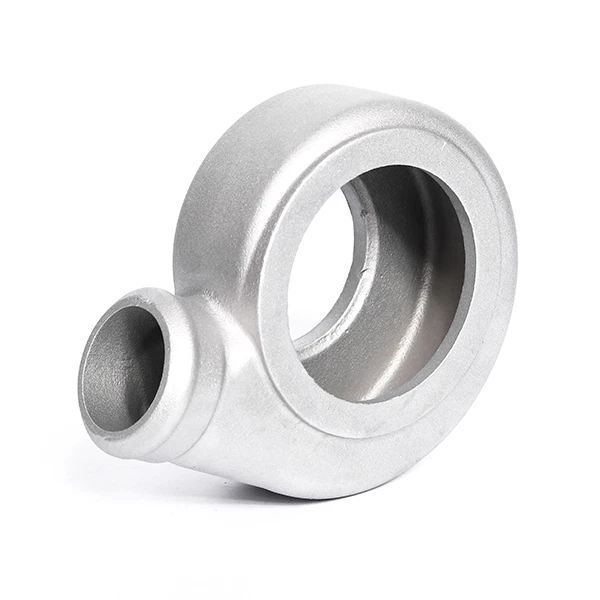Mobile:+86-311-808-126-83
Email:info@ydcastings.com
Understanding the Process of Gate Valve Casting and Its Applications in Industry
Gate Valve Casting An In-Depth Exploration
Gate valves are essential components in various industrial applications, particularly in plumbing and piping systems. Their primary function is to control the flow of liquids and gases by either allowing or obstructing passage through a pipe. The manufacturing of these vital components often involves a process known as casting, which presents unique challenges and benefits. This article explores the intricacies of gate valve casting, including the materials used, the casting processes employed, and the advantages it brings to the final product.
Understanding Gate Valves
Before delving into the casting processes, it is crucial to understand what gate valves are and how they function. Gate valves are designed to provide a straight-flow path and minimal pressure drop when fully opened. They typically consist of a body, gate, seat, and actuator. The gate is lowered or raised to stop or allow the flow of fluid. Because they are not designed for throttling, gate valves are primarily used in applications where a complete shut-off is necessary.
The Importance of Casting in Manufacturing
Casting is a manufacturing process that allows the production of complex shapes and sizes that would be difficult or impossible to achieve with other methods. This technique involves pouring molten material into a mold, where it cools and solidifies into the desired form. In the context of gate valves, casting is advantageous because it allows for the creation of intricate geometries necessary for the valve body and other components.
Common Materials for Gate Valve Casting
The choice of material for casting gate valves is crucial, as it directly affects the valve's performance, durability, and resistance to corrosion. Commonly used materials include
1. Cast Iron This traditional material is favored for its excellent machinability and wear resistance. Cast iron gate valves are often used in water distribution systems due to their strength and durability.
2. Carbon Steel Carbon steel valves are known for their high tensile strength and ability to withstand high pressures and temperatures, making them suitable for oil and gas applications.
3. Stainless Steel For applications where corrosion resistance is paramount, stainless steel gate valves are preferred. They are often used in chemical processing and food manufacturing industries.
gate valve casting

Casting Processes
There are several casting processes used in the manufacturing of gate valves
1. Sand Casting This is one of the most common methods, where a sand mold is created based on a pattern of the valve. The molten metal is poured into the mold and allowed to cool. Sand casting is cost-effective and versatile.
2. Investment Casting Also known as lost-wax casting, this process involves creating a wax pattern coated with a ceramic shell. Once the shell is formed, the wax is melted away, and molten metal is poured into the cavity. This method produces high-precision components with excellent surface finishes.
3. Die Casting For mass production, die casting is often employed. This process uses high-pressure to inject molten metal into a steel mold, resulting in quick production and repeatability but typically limits the complexity of the designs.
Advantages of Casting in Gate Valve Production
Casting offers several advantages in the manufacturing of gate valves
- Complex Shapes Casting allows for the creation of intricate shapes and internal geometries that would be challenging using alternative methods.
- Material Efficiency The casting process can minimize waste, particularly when producing large quantities, as the molds can be reused.
- Cost-Effectiveness Although initial tooling costs can be high, the ability to produce large volumes at lower costs per unit makes casting an economically attractive option in the long run.
Conclusion
Gate valve casting is a critical aspect of the manufacturing process, enabling the production of reliable, efficient, and durable valves that are essential in a variety of industries. With the choice of suitable materials and advanced casting techniques, manufacturers can ensure that their gate valves meet the required performance standards for diverse applications. As industries continue to evolve, the casting processes will likely adapt, incorporating new technologies to enhance efficiency further and improve product quality.
-
Why Should You Invest in Superior Pump Castings for Your Equipment?NewsJun.09,2025
-
Unlock Performance Potential with Stainless Impellers and Aluminum End CapsNewsJun.09,2025
-
Revolutionize Your Machinery with Superior Cast Iron and Aluminum ComponentsNewsJun.09,2025
-
Revolutionize Fluid Dynamics with Premium Pump ComponentsNewsJun.09,2025
-
Optimizing Industrial Systems with Essential Valve ComponentsNewsJun.09,2025
-
Elevate Grid Efficiency with High-Precision Power CastingsNewsJun.09,2025











